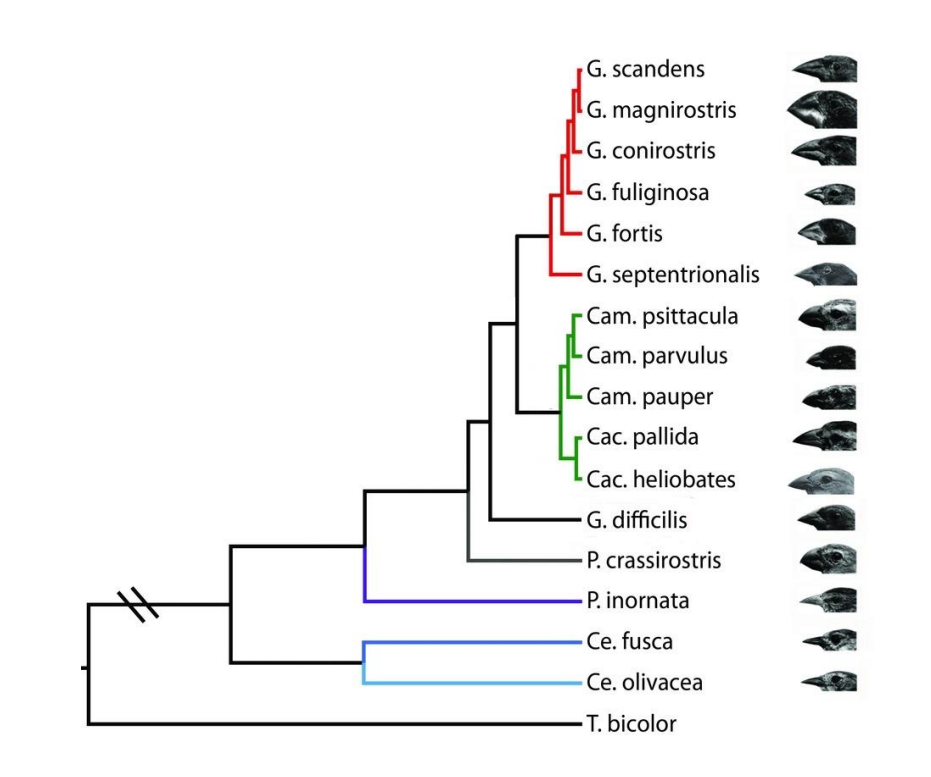Darwin’s finches (Thraupidae, Passeriformes) have beaks of different shapes that allow them to feed on many different diets: insects, seeds, berries, and young leaves. For example, large ground finch has a very deep and broad bill adapted to crack hard and large seeds, while the cactus finch has an elongated and pointy beak for probing cactus flowers and fruits. Geospiza finch bills develop their distinct shapes during embryogenesis and are apparent upon hatching. Figure below is species-tree estimation of phylogenetic relationships among the Galápagos finches using mtDNA and nuclear loci information. ***Branch lengths are proportional to time and genetic distance except for abbreviated basal node depth.*** Photographs of profiles of each species are shown. Identify all species pair(s) who have the most similar DNA sequence and clearly explain why. Would Ce. fusca and Ce. olivacea be considered as one of the pair with the most similar DNA sequence given that "branch lengths are proportional to time and genetic distance except for abbreviated basal node depth" meaning longer branches generally indicate more time and greater genetic divergence between groups of organisms, while shorter branches indicate less time and less genetic divergence. With the exception that the "abbreviated basal node depth", the basal node is the point at which the tree splits into two major groups, and the "depth" of this node refers to the length of the branch leading up to it Please let me know the final answer after considering everything.
Darwin’s finches (Thraupidae, Passeriformes) have beaks of different shapes that allow them to feed on many different diets: insects, seeds, berries, and young leaves. For example, large ground finch has a very deep and broad bill adapted to crack hard and large seeds, while the cactus finch has an elongated and pointy beak for probing cactus flowers and fruits. Geospiza finch bills develop their distinct shapes during embryogenesis and are apparent upon hatching.
Figure below is species-tree estimation of phylogenetic relationships among the Galápagos finches using mtDNA and nuclear loci information.
***Branch lengths are proportional to time and genetic distance except for abbreviated basal node depth.***
Photographs of profiles of each species are shown.
Identify all species pair(s) who have the most similar DNA sequence and clearly explain why. Would Ce. fusca and Ce. olivacea be considered as one of the pair with the most similar DNA sequence given that "branch lengths are proportional to time and genetic distance except for abbreviated basal node depth"
- meaning longer branches generally indicate more time and greater genetic divergence between groups of organisms, while shorter branches indicate less time and less genetic divergence.
- With the exception that the "abbreviated basal node depth", the basal node is the point at which the tree splits into two major groups, and the "depth" of this node refers to the length of the branch leading up to it
Please let me know the final answer after considering everything.

Step by step
Solved in 2 steps


